Toronto City Airport Leads the Move to Fluorine-Free Firefighting Foam
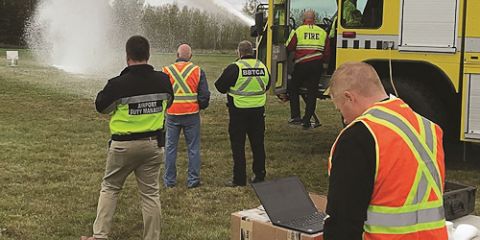
Billy Bishop Toronto City Airport (YTZ) has wrestled an issue to the ground that other airports throughout the world are still grappling with—the use of fire suppressant foam that contains per- and polyfluoroalkyl substances (PFAS), which are linked to harmful effects for humans and the environment. YTZ was the first commercial airport in Canada, and all of North America, to complete the transition to fluorine-free firefighting foam. Other Canadian airports have since completed the transition to fluorine-free foam.
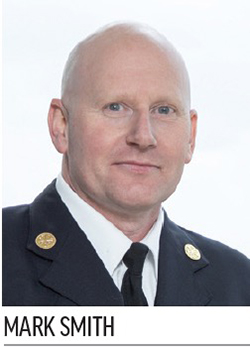 Mark Smith, former fire chief and Emergency Response and Planning manager for Ports Toronto and YTZ, launched a search for an alternative early on and quickly discovered that many fluorine-free fire suppressant foams did not meet federal standards for aviation use. All that changed in July 2019, when Transport Canada issued an exemption to a section of the Aircraft Fire Fighting at Airport and Aerodrome Standards that allows airports to use fluorine-free aircraft rescue and firefighting (ARFF) products under specific circumstances.
Mark Smith, former fire chief and Emergency Response and Planning manager for Ports Toronto and YTZ, launched a search for an alternative early on and quickly discovered that many fluorine-free fire suppressant foams did not meet federal standards for aviation use. All that changed in July 2019, when Transport Canada issued an exemption to a section of the Aircraft Fire Fighting at Airport and Aerodrome Standards that allows airports to use fluorine-free aircraft rescue and firefighting (ARFF) products under specific circumstances.
In order for an airport to qualify, its chosen foam must:
- pass performance testing performed by third party,
- meet applicable ICAO Level B and C certification requirements,
- not contain any fluorinated compounds,
- be compatible with vehicles’ onboard foam portioning system,
- be compatible with vehicles’ secondary agent, and
- undergo testing on the airport’s specific ARFF equipment to ensure proper proportioning at each discharge port.
|
facts&figures
Project: Transition to Fluorine-Free Location: Billy Bishop Toronto City Airport Distinction: 1st commercial airport in North America to make the switch Timeline: Trucks modified & cleaned Sept. & Oct. 2019; final testing Oct. 2019 Product Used: SOLBERG® RE-HEALING RF3 Manufacturer: Perimeter Solutions ARFF Vehicles: 2 Oshkosh 1500 Striker® trucks (2009 & 2011) Manufacturer: Oshkosh Airport Products Waste Disposal: GFL Environmental Water Testing: SGS Analytical Key Benefit: Fluorine-free foam poses less risk to the environment & human health |
The 2019 exemption opened the door for Chief Smith, and he promptly assembled a team to research products that would take YTZ into more environmentally friendly territory.
“We had to meet all requirements to take advantage of the exemption,” he specifies. “We finally found a product [SOLBERG® RE-HEALING RF3] that met our needs and
moved forward.”
The regional airport that traditionally serves 2.8 million passengers began using fluorine-free ARFF foam in 2019, blazing a trail for other airports to potentially follow.
Smith, who has since moved to a new position at another Canadian airport, jokes that the foam transition at YTZ has become his “claim to fame.” But in all seriousness, he stresses, it was definitely the prudent course of action.
“PFAS is carcinogenic and harmful to human health. It was basically a no-brainer to make that transition,” he says. “It wasn’t about being first in North America. It was about making the right choice for our firefighters, the public and the environment.”
Finding an Alternative
PFAS are often referred to as “forever chemicals” because they are indestructible man-made compounds that build up in the environment. Compounding the issue, they are common in many consumer goods (food containers and wrappers, clothing, solvents, non-stick cookware, etc.) as well as aqueous film-forming foam (AFFF) used to fight fires.
Exposure to PFAS is linked to certain cancers, thyroid and liver disease, asthma and other serious health conditions, prompting governments throughout the world to limit their use.
Chief Smith’s search for viable, more environmentally benign firefighting foam was an uphill battle because there were not many options back in 2019 when he began looking. Eventually, his quest led to Perimeter Solutions, a company with ICAO Level B and C certified fluorine-free foam concentrates.
“Initially there was a big gap in performance between legacy PFAS-containing formulations and new fluorine-free formulations,” explains Mark Siem, head of business development and a chemist for Perimeter Solutions. “There was a gap in extinguishment, burn back and sealability times. But over the last few years, fluorine-free foams have gotten a lot better, especially for jet fuel fires.”
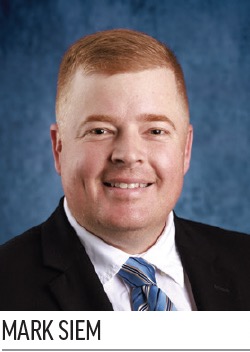 Smith is in agreement about the improved performance, and notes that more brands of fluorine-free options are now available, including BIOEX and National Foam. “But at the time, Perimeter Solutions had the only product that provided the documentation and technical support I needed to make the transition happen,” he recalls.
Smith is in agreement about the improved performance, and notes that more brands of fluorine-free options are now available, including BIOEX and National Foam. “But at the time, Perimeter Solutions had the only product that provided the documentation and technical support I needed to make the transition happen,” he recalls.
Smith explains that SOLBERG® RE-HEALING RF3 was selected for use at YTZ because the environmentally sustainable fluorosurfactant- and fluoropolymer-free foam concentrate effectively extinguishes Class B hydrocarbon fuel fires. In addition, it proportions at a ratio of 3% foam to 97% water, which worked with the airport’s existing Oshkosh Striker® firefighting vehicles.
The product has a 30- to 40-minute drain time, so it suppresses vapors; but it’s still better for the environment, adds Siem. “The foam degrades and breaks down in less than 90 days, so there is no long-term effect of the product when it’s discharged,” he explains. “There are short-term issues because the environment has to deal with any kind of discharge, but its biodegradability ensures it doesn’t have any longer-term issues. Compare that to PFAS, which doesn’t break down for thousands of years.”
Tap Manufacturers for Help
Siem and Smith both stress the importance of involving ARFF truck manufacturers when selecting foam.
“Whether it’s fluorine-free foam or AFFF, you always want to make sure that the proportioning equipment works correctly on the trucks,” says Siem. “That’s what puts the foam concentrate into the water stream to make the foam solution. You want to make sure that’s accurate, or the foam won’t be as effective.”
Jack Bermingham, business unit director for Oshkosh Airport Products, emphasizes that this is especially acute when using fluorine-free products, because they are generally more viscous than legacy foams, which are thin like water.
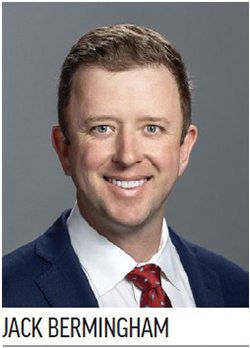 “Fluorine-free foams have a variety of different viscosities depending on the recipe used by the manufacturer,” he adds. “Airports need to engage Oshkosh Airport Products or one of our local service providers to ensure a proper conversion to fluorine-free foam for their specific trucks and their specific fluorine-free foam.”
“Fluorine-free foams have a variety of different viscosities depending on the recipe used by the manufacturer,” he adds. “Airports need to engage Oshkosh Airport Products or one of our local service providers to ensure a proper conversion to fluorine-free foam for their specific trucks and their specific fluorine-free foam.”
That’s exactly what Chief Smith did. As expected, technicians needed to modify the poppet-style proportioning system on YTZ’s 2009 and 2011 Striker® trucks to accommodate the thicker fluorine-free foam. That process included upfront analysis by Oshkosh engineers using computational fluid dynamics to estimate the new orifice sizes. Physical testing of foam production was then performed with airport staff to validate the baseline analysis.
Modifications took about two weeks per vehicle.
Bermingham notes that Oshkosh’s newer electronic proportioning system does not require manual adjustments for most fluorine-free foams.
Cleaning Day
Before loading new fluorine-free foam into its trucks, YTZ first cleaned out the existing product.
As a pioneer in making the switch, the airport had little information about the best way to proceed. “There was no formal process in place when Canada issued the exemption,” Smith recalls. “All they said was [that] airports can use non-fluorinated products, but there was no formal direction on how to get AFFF and PFAS out of the vehicles.”
The airport’s Oshkosh Striker® trucks held about 210 gallons of AFFF each. Knowing this, Smith ordered eight 264-gallon hazardous waste totes from GFL Environmental, a waste management service provider. Airport workers filled the first tote with 100% AFFF from the trucks. Next, they refilled the empty trucks with water, drove them around to mix the water throughout the tanks, and then emptied the AFFF/water mix into the remaining waste totes. The rinse process was repeated three times, until all the totes were full.
“On our fifth round, we noticed there was no greasy residue on top of the tank,” Smith reports. “We started discharging at that point, beginning with the roof turret, then the bumper turret, then moving to the handlines and under-truck nozzles. All we had coming out of the truck at that point was pure water.”
GFL Environmental hauled away the totes of AFFF and rinse water for disposal at a hazardous waste landfill in Canada. Two other common disposal methods for airports are incineration and deep well injection.
Smith verified PFAS levels in the rinse water were at acceptable levels by overnighting a frozen sample to SGS Analytical for analysis.
Siem notes that the ridges, pockets and crannies inside ARFF trucks make it inherently difficult to remove all traces of PFAS. The entire system needs to be rinsed many times to achieve the levels the government considers safe, he adds.
In 2022, the Environmental Protection Agency updated its lifetime health advisory levels for PFAS chemicals in AFFF. For perfluorooctanoic acid (PFOA), the recommendation is now 0.004 parts per trillion; for perfluorooctanesulfonic acid (PFOS), it is 0.02 parts per trillion. Although the Environmental Protection Agency is a U.S. agency, it implements environmental agreements and cooperative frameworks with Canada and Mexico.
“There are a lot of different processes and cleansing chemicals you could use to cleanse your vehicle today than were available when I did this,” Smith advises. “Whatever process is used, it’s vital to use personal protective equipment. I made sure our firefighters were wearing gloves, masks, eye protection, and Tyvek suits because PFAS poses a great risk to personal health.”
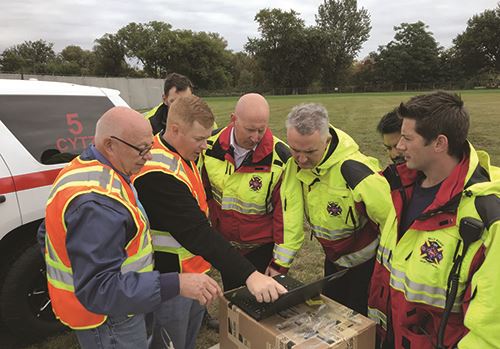
Another important objective was continuing to meet airport category requirements during foam transition and testing.
Training Needs
Switching to fluorine-free foam requires firefighters to adjust their application methods, notes Siem.
When using AFFF, firefighters often build up a blanket of foam next to a fire, then push it into the fire. Another common method is to push foam at the aircraft and let it bounce off and land on the burning fuel underneath. Sometimes, foam is shot into the air so it can land on a burning surface.
Fluorine-free foams should not be applied directly and/or forcefully onto a surface, Siem advises. He recommends the DFW Fire Training Research Center’s preferred method: building up foam in front of the fire, then changing the nozzle pattern to spread the foam out.
“You also may have to reapply [fluorine-free foam] more often than you would with AFFF,” adds Smith. “We had to train our firefighters in application. Training can be difficult because there is always an environmental concern, even with fluorine-free products; and there is always a cost. But we need to ensure firefighters understand the process of foam application.”
Recommendations for Success
With the switch to fluorine-free complete at YTZ, Smith has one key suggestion for other airports: Build a transition team that includes the foam manufacturer, vehicle manufacturer and internal resources.
“YTZ mechanics and technical staff from Oshkosh Airport Products and Perimeter Solutions were all part of my technical support team, and they were a huge asset throughout the transition,” says Smith, noting that the group worked together for over five months.
“You will need documentation from the supplier…and you will need support from the truck manufacturer for all physical testing,” he elaborates. “The testing we did with Oshkosh Airport Products made me feel confident that the product was going to work for Billy Bishop Airport [YTZ].”
Bermingham notes that Oshkosh Airport Products does not make specific recommendations for processes or agents to ensure a vehicle is clean, but its internal experts and network of local service providers are available to help modify ARFF trucks and assist with fluorine-free foam selection.
Smith emphasizes that YTZ could not have made the switch successfully without a great team of mechanics on staff. “We had to modify the trucks and make sure we were compliant with all Transport Canada regulations,” he explains. “We had to make sure we had a third vehicle and were ready for service. Our mechanics played a tremendous role in that process.”
In short, the transition to more environmentally friendly firefighting foam required the right partnerships, products and people.
FREE Whitepaper
Fairbanks International Airport Baggage Transport Conveyor Enhanced With Mod Drive™ System
Airports face a host of unique industry challenges, such as meeting efficiency regulations and seeking out the best maintenance practices to reduce costs and keep operations flowing. In today’s current economic climate, any potential cost savings can go a long way.
In 2019, Alaska’s Fairbanks International Airport (FAI) sought to modernize its equipment and operations. They were dissatisfied with the performance of the gearmotors on their baggage transport conveyors and began searching for new suppliers. Regal approached FAI with a solution that could improve equipment performance and simplify maintenance, with the added benefit of energy cost savings: the Hub City® MOD Drive™ system.
This white paper discusses the hardware deployed, the test results and the annualized expectations for ROI.








